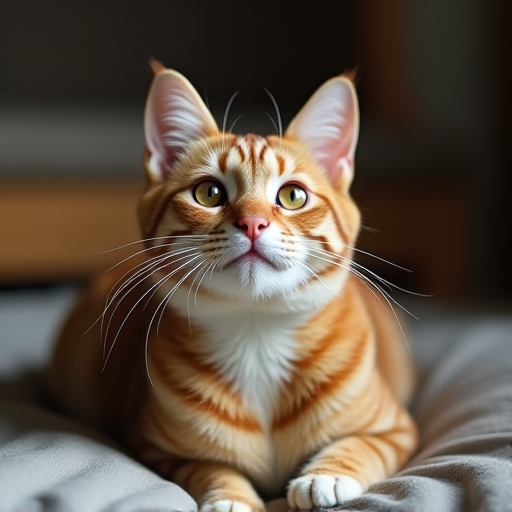
Why Do Cats Purr?
Cats are enigmatic creatures, captivating humans with their mysterious behaviors and charming personalities. Among the many fascinating traits of our feline companions, purring is one of the most intriguing. The gentle, rhythmic sound of a cat's purr is often associated with contentment and comfort, but its purpose extends beyond simple expressions of happiness. In this article, we will delve into the reasons why cats purr, exploring the physiological mechanisms behind this behavior, its various meanings, and the potential benefits it offers to both cats and humans.
The Mechanism of Purring
Before understanding why cats purr, it's important to explore how they produce this unique sound. Purring is generated through the rapid movement of the muscles within the cat's larynx (voice box). During both inhalation and exhalation, these muscles twitch in a rhythmic pattern, causing a sudden separation of the vocal cords. As the air flows through the voice box, it results in the characteristic purring sound. This process is controlled by a neural oscillator in the cat's brain, which sends repetitive signals to the laryngeal muscles.
Purring is a low-frequency sound, typically ranging from 25 to 150 Hertz. Interestingly, this frequency range has been shown to have therapeutic effects, which may hint at some of the reasons why cats purr.
Reasons Why Cats Purr
1. Expression of Contentment
The most common perception of a purring cat is that it is content and relaxed. Indeed, many cats purr when they are being petted, cuddled, or lying comfortably in their favorite spot. This form of purring is akin to a human smile, an indication of pleasure and satisfaction.
2. Communication with Kittens
Purring serves as an essential communication tool between mother cats and their kittens. Kittens begin to purr shortly after birth, which helps them bond with their mother. The vibrations produced by purring help the mother locate her kittens in the nest, and it reassures the kittens of her presence. Moreover, it encourages the kittens to nurse, as they often purr while suckling.
3. Self-Soothing and Pain Relief
Interestingly, cats also purr when they are in pain or feeling distressed. This behavior suggests that purring may serve as a self-soothing mechanism. The low-frequency vibrations of purring have been theorized to promote healing and pain relief. In fact, studies have shown that frequencies between 25 and 150 Hertz can improve bone density, promote tissue regeneration, and reduce inflammation. Thus, a cat may purr to help alleviate discomfort and speed up recovery.
4. Stress Reduction
Cats are known to purr during stressful situations, such as visits to the veterinarian or encounters with other animals. Purring in these contexts may help reduce stress and anxiety. The calming effect of purring could be beneficial for both the cat and those around it, creating a peaceful atmosphere.
5. Soliciting Attention
Some cats purr to solicit attention or food from their human companions. This type of purring often has a slightly different tone, incorporating a higher-pitched element similar to a cry. Researchers have found that humans are more likely to respond to this solicitation purring, as it taps into our instincts to care for infants.
Benefits of Purring for Humans
While purring primarily serves the cat, it also offers several benefits to humans. The soothing sound and vibration of a purring cat can have a calming effect on people, reducing stress and anxiety. Petting a purring cat is known to lower blood pressure and promote relaxation, contributing to better overall mental health.
Conclusion
Purring is a multifaceted behavior with a range of purposes and benefits. Whether expressing contentment, communicating with kittens, or providing self-healing and comfort, purring is a vital part of a cat's life. It is a testament to the deep bond between cats and humans, offering mutual benefits and fostering a harmonious relationship. Understanding the various reasons why cats purr can enhance our appreciation for these fascinating creatures and deepen the connection we share with them.
